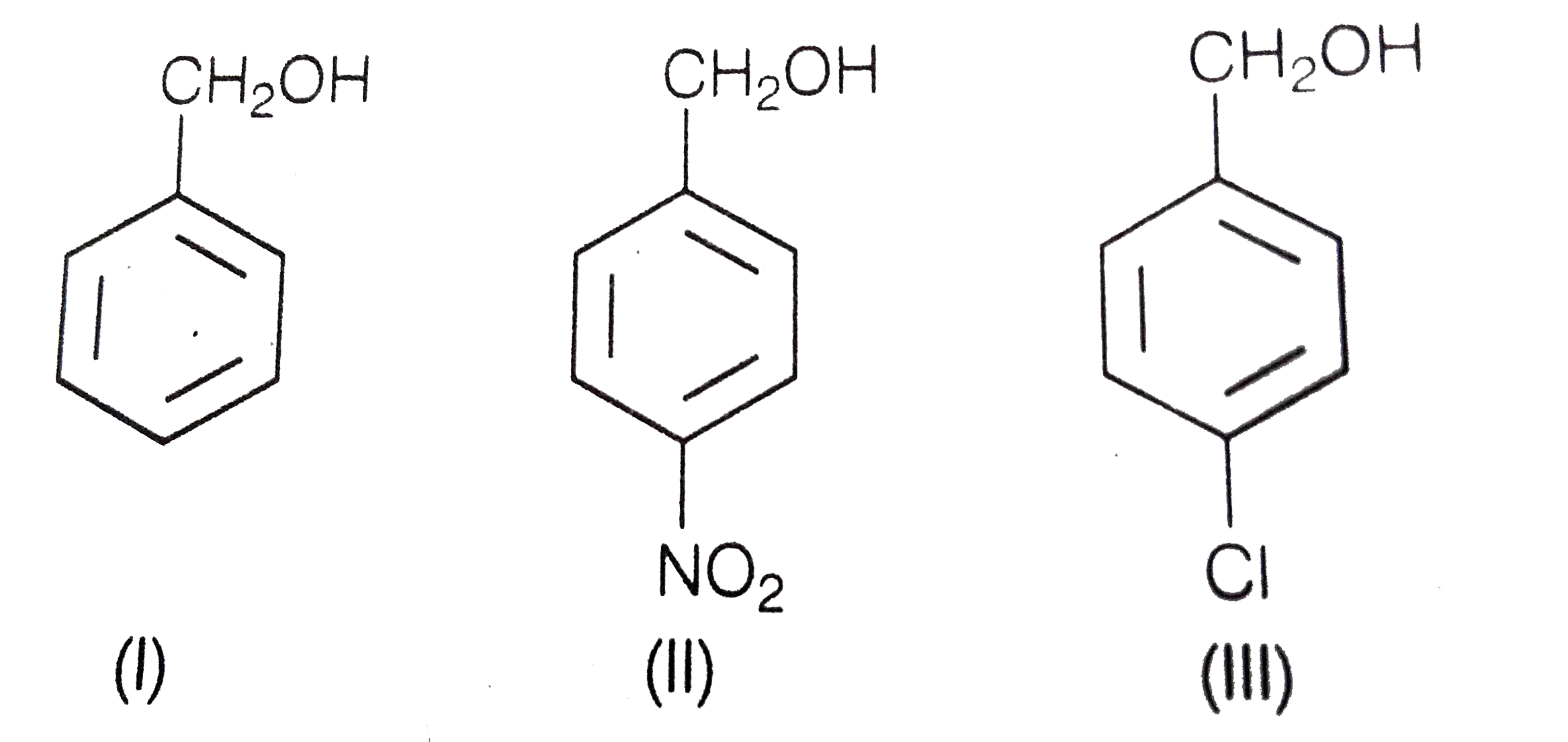The increasing order of reduction of alkyl halides with zinc and dilute HCl is
R−Cl<R−I<R−Br
R−Cl<R−Br<R−I
R−I<R−Br<RCl
R−Br<R−I<R−Cl
The correct Answer is:B
To determine the increasing order of reduction of alkyl halides with zinc and dilute HCl, we need to analyze the stability of the halide ions produced during the reaction. The halides we will consider are Cl⁻, Br⁻, and I⁻.
1. Identify the Reaction:
The reaction involves alkyl halides (RX) being reduced to alkanes (RH) in the presence of zinc and dilute HCl. The halogen (X) is replaced by hydrogen (H) during this reduction process.
2. Understand the Role of Halide Ions:
During the reduction, the halide ion (X⁻) is formed. The stability of this halide ion is crucial because a more stable halide ion will lead to a faster reduction reaction.
3. Stability of Halide Ions:
The stability of halide ions generally increases down the group in the periodic table. The trend for halides is:
- Iodide (I⁻) > Bromide (Br⁻) > Chloride (Cl⁻)
This is because larger atoms can better stabilize the negative charge due to their larger size and ability to diffuse the charge over a greater volume.
4. Order of Reduction:
Since the stability of the halide ions is directly related to the rate of reduction, we can establish the following order:
- Cl⁻ is the least stable, leading to the slowest reduction.
- Br⁻ is more stable than Cl⁻ but less stable than I⁻, leading to a moderate reduction rate.
- I⁻ is the most stable, leading to the fastest reduction.
5. Conclusion:
Therefore, the increasing order of reduction of alkyl halides with zinc and dilute HCl is:
- RCl < RBr < RI
Final Answer:
The increasing order of reduction of alkyl halides with zinc and dilute HCl is:
RCl < RBr < RI
---
The reaction involves alkyl halides (RX) being reduced to alkanes (RH) in the presence of zinc and dilute HCl. The halogen (X) is replaced by hydrogen (H) during this reduction process.
During the reduction, the halide ion (X⁻) is formed. The stability of this halide ion is crucial because a more stable halide ion will lead to a faster reduction reaction.
The stability of halide ions generally increases down the group in the periodic table. The trend for halides is:
- Iodide (I⁻) > Bromide (Br⁻) > Chloride (Cl⁻)
This is because larger atoms can better stabilize the negative charge due to their larger size and ability to diffuse the charge over a greater volume.
Since the stability of the halide ions is directly related to the rate of reduction, we can establish the following order:
- Cl⁻ is the least stable, leading to the slowest reduction.
- Br⁻ is more stable than Cl⁻ but less stable than I⁻, leading to a moderate reduction rate.
- I⁻ is the most stable, leading to the fastest reduction.
Therefore, the increasing order of reduction of alkyl halides with zinc and dilute HCl is:
- RCl < RBr < RI
The increasing order of reduction of alkyl halides with zinc and dilute HCl is:
RCl < RBr < RI
Topper's Solved these Questions
- HYDROCARBONSBOOK - NCERT EXEMPLAR ENGLISHCHAPTER - HYDROCARBONSEXERCISE - Multiple Choice Questions (More Than One Options)
9 Videos
- HYDROCARBONSBOOK - NCERT EXEMPLAR ENGLISHCHAPTER - HYDROCARBONSEXERCISE - Short Answer Type Questions
20 Videos
- ENVIRONMENTAL CHEMISTRYBOOK - NCERT EXEMPLAR ENGLISHCHAPTER - ENVIRONMENTAL CHEMISTRYEXERCISE - Long Answer Type
5 Videos
- HYDROGENBOOK - NCERT EXEMPLAR ENGLISHCHAPTER - HYDROGENEXERCISE - LONG ANSWER TYPE QUESTIONS
8 Videos
Similar Questions
Knowledge Check
The order of reactivity of alkyl halide in the reactionR−X+Mg→RMgX is :
ARI>RBr>RClBRCl>RBr>RICRBr>RCl>RIDRBr>RI>RClThe ease of dehydrohalogenation of alkyl halide with alcoholic KOH is-
A3∘<2∘<1∘B3∘>2∘>1∘C3∘<2∘>1∘D3∘>2∘<1∘
Discuss the partial reduction of alkyl cyanides.
View SolutionFor dehyetohalogenation, the order of reactivity of alkyl halides considering E1 mechanism is
View SolutionDehydrohalogenation of an alkyl halide is:
View SolutionMark the correct increasing order of reactivity of the following compounds with HBr/HCl.

View SolutionMark the correct increasing order of reactivity of the following compounds with HBr/HCl.

View SolutionWhy are alkyl halides insoluble in water?
View Solution
